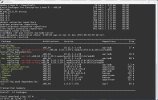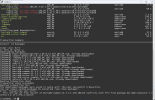Hi,
I'd strongly recommend performing something like this in a maintenance timeframe if the server is in a production environment.
Actions performed as root.
1. Create dump backup folder:
# mkdir /root/dbBackups
2. Dump databases, just in case(don't proceed if this action failed):
# plesk db -Ne 'show databases' | egrep -vE '(information_schema|performance_schema|mysql)' | xargs -l bash -c 'mysqldump -uadmin -p`cat /etc/psa/.psa.shadow` $0 > /root/dbBackups/$0.sql'
3. Create /etc/yum.repos.d/mariadb.repo with the following contents:
Code:
[mariadb]
name = MariaDB
baseurl = http://mirror.mariadb.org/yum/11.3.1/rhel8-amd64/
module_hotfixes=1
gpgkey=https://yum.mariadb.org/RPM-GPG-KEY-MariaDB
gpgcheck=1
4. Stop mariadb server:
# systemctl stop mariadb
5. Remove it:
# rpm -e --nodeps `rpm -qf /usr/libexec/mysqld`
6. Create repository cache and install new MariaDB from it:
# yum makecache
# yum install mariadb-server
(will be prompted to hit "Y" a number of times)
7. Adjust config's bind_address value:
# sed -i 's/::ffff://' /etc/my.cnf
8. Start MariaDB 10.11:
# systemctl start mariadb
9. Upgrade tables:
MYSQL_PWD=`cat /etc/psa/.psa.shadow` mysql_upgrade -uadmin
Done.



